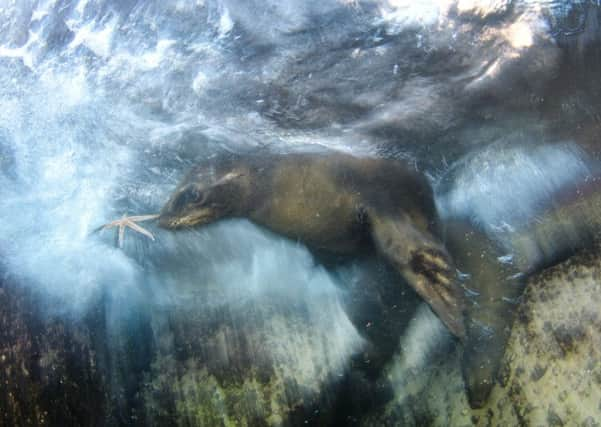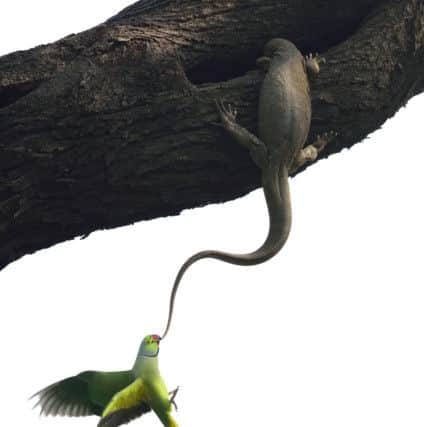A stolen moment in time


“Protecting their remaining habitat is critical for orangutans to survive. If we want to preserve a great ape that retains its vast culturally transmitted knowledge of how to survive in the rainforest and the full richness of wild orangutan behaviour, then we need to protect orangutans in the wild, now,” says Tim.
While Entwined Lives might have scooped the top prize, there are similar stories behind each of the 100 photographs of animals, plants and wild landscapes which made the final cut and are on display in Beverley’s Treasure House.
Advertisement
Hide AdAdvertisement
Hide AdAll the images have a raw beauty and an ability to convey a sense of place or evoke a particular mood, none more so than Mats Andersson’s melancholy image of a lone pygmy owl in a Swedish forest, which was taken following the death of the bird’s partner and won the black and white photograph category.


Certain images have the power to shock, including a grisly shot that UK photographer Simon Stafford took in Kenya, which shows hyenas feasting on the contorted, bloodied bodies of wildebeest trampled to death during a stampede in a steep gorge. The winning entries in the photojournalism categories offer a powerful and, at times, disturbing insight into the impact that we humans are having on the natural world.
Alongside each photograph there’s an information panel explaining the fascinating story behind it, which also reveals the painstaking work involved. Angel Fitor, the winner of the invertebrates category, waited for three years to capture his ethereal image of a lone barrel jellyfish at sunset on a calm evening off the coast of Murcia in Spain.
Jan English, head of touring exhibitions at the Natural History Museum, said: “Wildlife Photographer of the Year celebrates the very best nature photography and is consistently one of our most successful touring exhibitions, enjoyed by millions every year.
Advertisement
Hide AdAdvertisement
Hide Ad“These images tell thought-provoking stories about our planet that prompt us all to think differently about the natural world and the future we want to create.”


Younger visitors will enjoy following a trail of bird and animal footprints through the Treasure House and up to the Art Gallery on the first floor, as well as spotting the fun animal models – many of them life-size – perched in and around the library on the ground floor. Most were fashioned from leather by the artist Karen Trower, but the papier mâché elephant and calf in the foyer is by paper sculptor Philip Cox.
When the Wildlife Photographer of the Year competition was first launched in 1965, it attracted 361 entries. Over the years, it has grown significantly in stature, particularly since the Natural History Museum became involved in 1984. These days it’s a global platform showcasing the most astonishing images from the natural world and now receives almost 50,000 entries from 96 countries. The winning photographs are on display at the Natural History Museum until September 2017, but the touring exhibition is in Beverley for ten weeks as part of the Hull 2017 City of Culture celebrations.
Councillor Richard Burton, portfolio holder for civic wellbeing and culture at East Riding of Yorkshire Council, said: “This exhibition came to Beverley as a direct result of the fact that East Riding of Yorkshire Council, a principal partner in Hull UK City of Culture 2017, refurbished the Art Gallery in 2014 with the clear aim of being able to attract exhibitions of this calibre. It is very much aimed at attracting people into the Treasure House as a hub of culture in the town, especially those who have not previously visited the Art Gallery.”
Advertisement
Hide AdAdvertisement
Hide AdThe Treasure House is usually open from Monday to Saturday, but due to the popularity of the Wildlife Photographer of the Year exhibition it will also be open the next three Sundays – March 5, 12 and 19. Admission is free.